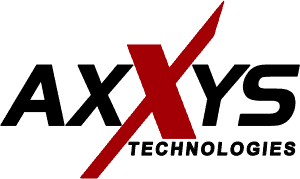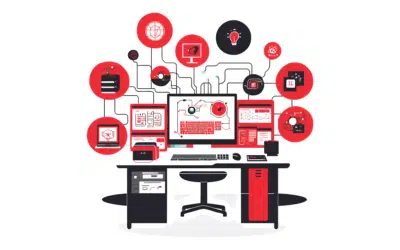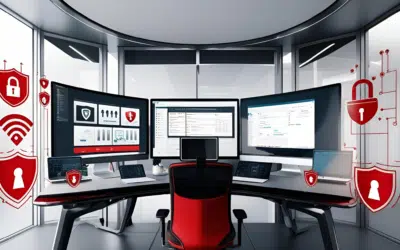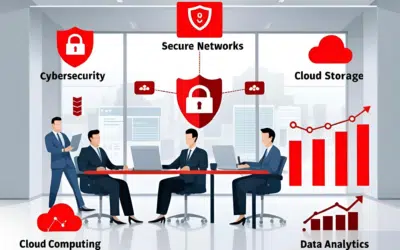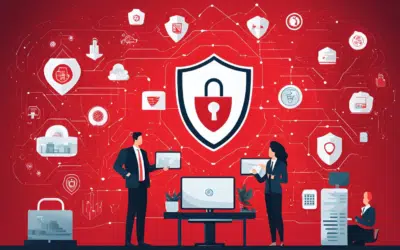As 2024 approaches, businesses must prioritize preparing their IT infrastructure. Regardless of your industry – be it a law firm, an energy company, or a financial services firm – IT readiness directly impacts business performance. But the question is, what does ‘getting ready’ entail?
Foremost, it involves conducting a comprehensive audit of your software and hardware. Such checks provide clarity on ownership, licensing, and requirement of software or hardware. Think of it as taking inventory in a store – knowing what’s available and what’s running low is crucial.
Another essential aspect is network security. The growing reliance on digital tools increases the need for strong security measures. Conducting security scans or penetration tests ensures the safety and security of your network.
Another vital element is training. As your tools and applications evolve, so should your team’s proficiency. A well-directed investment in training arms your team with the skills needed for an efficient digital workflow.
Lastly, budget allocation and partner evaluation hold utmost importance. Setting aside funds for potential tools and reassessing the capabilities of your partners against your IT requirements can prevent future hurdles. After all, adequate preparation today is the cornerstone of success tomorrow.
Conduct Comprehensive Software and Hardware Audits
For future readiness, a comprehensive software and hardware audit is crucial. This method offers insight into your current technology, its usage, and any existing gaps that may require attention.
Evaluating Your Software
Software audits play a pivotal role in maintaining IT readiness. They involve a detailed examination of your software applications, assessing the licenses owned, and pinpointing any unused or redundant ones. An in-depth software audit guides you on whether new licenses or software applications are necessary. It’s important to note that each unused license implies money spent without benefit. Therefore, ensuring that each application enhances your workflow and productivity is essential.
Hardware Audits: The Backbone of IT Infrastructure
Like software audits, hardware audits involve taking inventory of your technology assets. This encompasses everything from workstations, servers, printers, to network devices. It’s crucial to know what you own, and how it supports your operations. A hardware audit also identifies equipment nearing the end of its lifecycle that may require replacement. Having a clear picture of the state of your hardware allows for better planning for upgrades or replacements, avoiding unexpected failures.
Why Regular Audits are Essential
Audits shouldn’t be a one-off occurrence. With rapid technological advancements and the dynamic nature of your operations, regular audits are necessary. They help you keep pace with changes and modify your IT infrastructure as needed. Whether it’s adopting new software technologies or replacing outdated hardware, regular audits prevent sudden surprises. They help maintain an accurate IT assets inventory, optimize resource utilization, and guide future investment decisions. Remember, proactive actions now can prevent significant problems and expenses later.
A thorough software and hardware audit goes beyond mere inventory taking. It involves gaining a solid understanding of your IT environment and using that knowledge to make strategic decisions. The results of these audits lay the groundwork for your IT readiness, laying the foundation for your success in 2024 and beyond.
Evaluate Your Security Posture
Strong security measures are crucial in the current era. Without them, you risk exposing your network to hackers and cybercriminals, which could lead to data breaches, loss of trust and a business downturn.
The Role of Security Scans and Penetration Tests
Security scans and penetration tests play vital roles in network security. A security scan systematically assesses your network for vulnerabilities, acting as a health checkup. A penetration test, on the other hand, simulates a hacker attack to gauge the potential extent of a breach.
These tests offer numerous advantages:
- Spot and fix vulnerabilities before hackers can take advantage
- Strengthen network security to prevent data breaches
- Safeguard sensitive customer and company data
- Preserve trust with clients and stakeholders
- Comply with industry regulations and standards
Consider these tests as an investment towards the future security of your company. Addressing potential threats now ensures a more secure future.
Adopting Cybersecurity Solutions
After identifying your network’s weak points, it’s time to adopt solutions to strengthen your cybersecurity. This may involve installing firewalls, establishing secure networks, and routinely updating software to fix security flaws.
An effective cybersecurity strategy is multi-layered. It could include implementing a two-factor authentication system for all users, adding an extra layer of protection. Encrypting sensitive data is another approach to ensure its safety even in the event of a breach.
Keeping these measures current is essential. Cybersecurity is an evolving field, and staying updated helps you stay one step ahead of cybercriminals.
Training employees on safe online practices also contributes to better security. Even the most advanced security systems can fall prey to human error. Regular training can significantly reduce such incidents.
By adopting these measures and staying alert, you can ensure that your network is prepared for future challenges. A secure network allows you to concentrate on expanding your company, knowing your digital assets are well defended.
Ensure Employees are Well Trained on Technology
The effectiveness of technology hinges on your team’s ability to use it. Regular training sessions enhance your team’s skills, allowing them to master the tools at their disposal, not just familiarize themselves with them. This mastery positively impacts productivity.
A tool’s efficiency is directly tied to the proficiency of its user. Proper training can transform your team into tech-savvy individuals, ready to overcome any challenge with confidence.
With the constant evolution of tech trends, upskilling becomes a necessity. Regular training ensures your team stays current, holding a competitive position in the business world. As 2023 comes to a close, training (or retraining) employees on the new tools and systems introduced this year can have a big impact for getting 2024 started on the right track.
Promoting a Culture of Continuous Learning
Effective training isn’t a one-off event but an ongoing process that instills a culture of continuous learning. This approach enables your team to keep pace with the latest tech trends and adapt as they evolve. It’s a proactive method to ensure your team’s skills remain relevant amidst technological advancements.
Moreover, frequent training boosts morale and encourages employee engagement. Learning something new and exciting is inherently rewarding. By promoting learning, you foster a more engaged, motivated, and productive workforce.
Investing in tech training and education prepares your team for the future. The skills they acquire today will play a key role in your future success.
Prepare Now for Success in 2024
The path to success starts with preparation. Let Axxys Technologies guide you. Our audits are thorough, security measures robust, and training programs top-tier. Secure your future and increase productivity with our assistance. Don’t delay! Contact us to begin shaping your IT roadmap now!
